Web
and Book design, Copyright, Kellscraft Studio 1999-2008 (Return to Web Text-ures) |  (HOME) |
THE SUPERIORITY
OF
COUNTRY LIFE
SILENCE in our
day
is greatly to be desired. It is necessary to the thinker. It can be had
only in
the country, on a homestead removed far from the highway. We have no
sympathy
with the city dweller who complained he could not sleep in the country
because
the nights were so still. The weak point of our physique in the present
day, is
nerves. We force ourselves to do many things under a handicap of
confusion. We
pay the penalty. It is an unnecessary penalty. Pure air is now
to
be found only in the country. It is a question of a short time before
the main
arteries of our cities will be absolutely intolerable from the fumes of
gas.
Formerly, in a city of moderate dimensions, one might have pure air.
Now it is
impossible. Pure water can be guaranteed only in the country. Some of
us have
not forgotten the uproar caused a generation since by the discovery of
a
contaminated water supply in one of our greatest cities. In the country
one may
absolutely guard for a long distance in every direction the source of
his water
supply. That is to say, he may have water as pure as he likes. Not only
so but,
if he chooses to pipe it through an old well, he can have it as cold as
he
wants it, without ice. Fresh supplies
one
may guarantee in the country. No wealth is sufficient to insure them in
town.
Produce brought in to the kitchen immediately from the garden and the
farm has
a flavor otherwise impossible to obtain. The milk supply particularly
is of
supreme importance when there are children. Warm, fresh milk, can never
be had
except on the farm. It can never afterwards be so manipulated as to
bring back
what it has lost. Freedom from
fire
can absolutely be guaranteed in the country by proper construction. In
the
town, however fire-proof a dwelling may be, one never can guarantee the
character of the dwellings about it. Farm properties are poor risks,
since a
cheap and an inflammable farm house will bring more at the insurance
office
than at the real-estate office. But the householder who really desires
to
protect his premises, can go as far as he likes in the country. The country
alone
is the home of those who would study nature at its source. The great
museum at
Harvard has a multitude of flowers done in glass. It is a wonderful
achievement. A dweller in Maine, with the title deeds to a farm of fair
dimensions, has within the scope of his walk almost as many flowers and
shrubs
and trees as he can ever count and classify. In their soft freshness
and in
inimitable fragrance they appeal to him. He may toss his babe among the
buttercups and put it to sleep on the daisies. Over it may wave the
myriad
leaves. The sky is the cradle canopy. It is better to live nature than
to write
about it. The most
important
benefit of country life, however, lies deeper than any of those we have
mentioned. It is the reaction on our human nature that arises from
plenty of
room. The most pernicious thing in city life is its crowding on the
streets, in
the conveyances, in the rooms. The real dignity of human nature is
lifted by
the mere fact that space about us is unoccupied by a crowd of human
beings. It is
easier to think on broad lines when we are in the country. We obtain a
better
perspective. There is greater truth in our vision. We gain poise and
the power
of estimating values. In this aspect, country life is more important
for the
thinker than for those who work only with the hands.
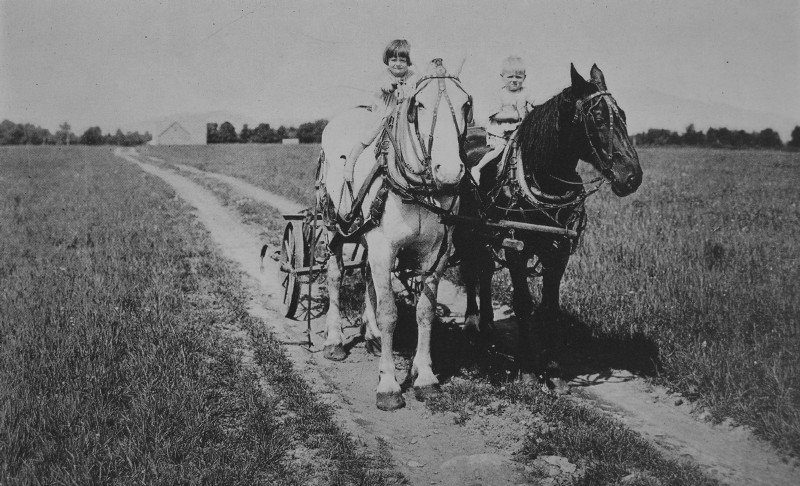 MAINE FARM PRODUCTS - GREENVILLE 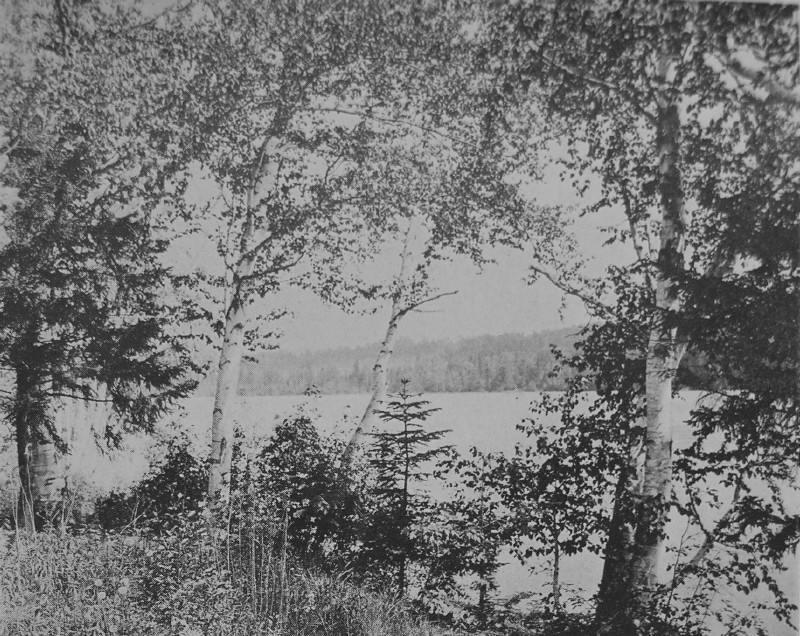 MINGO POINT BIRCHES - RANGELEY LAKES 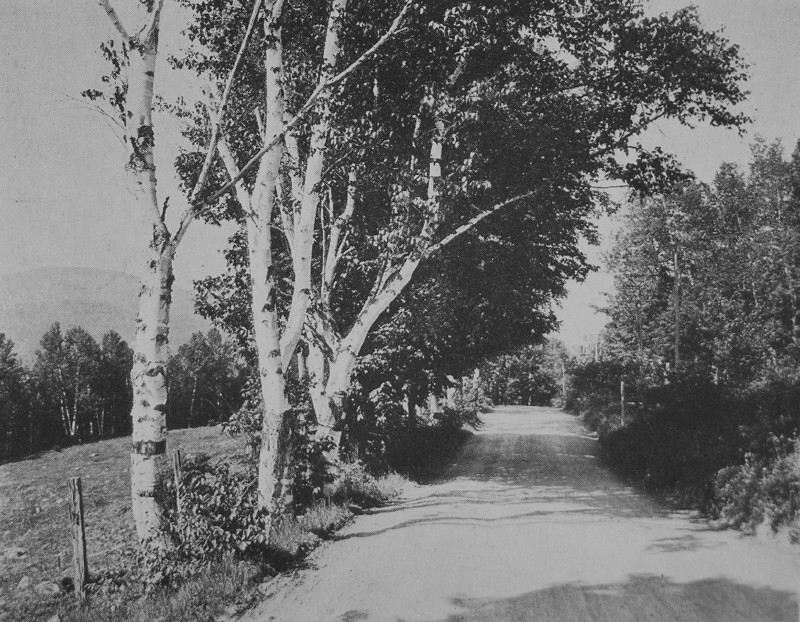 A RANGELEY ROAD 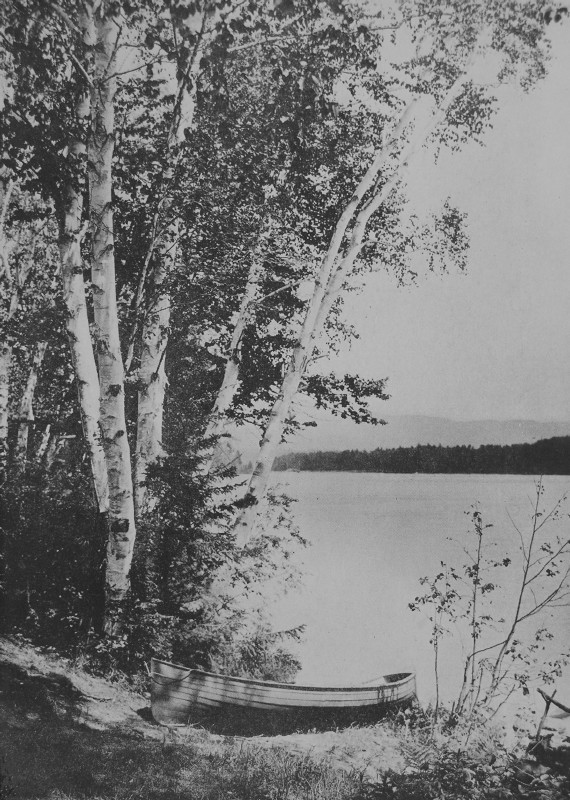 A RANGELEY LANDING 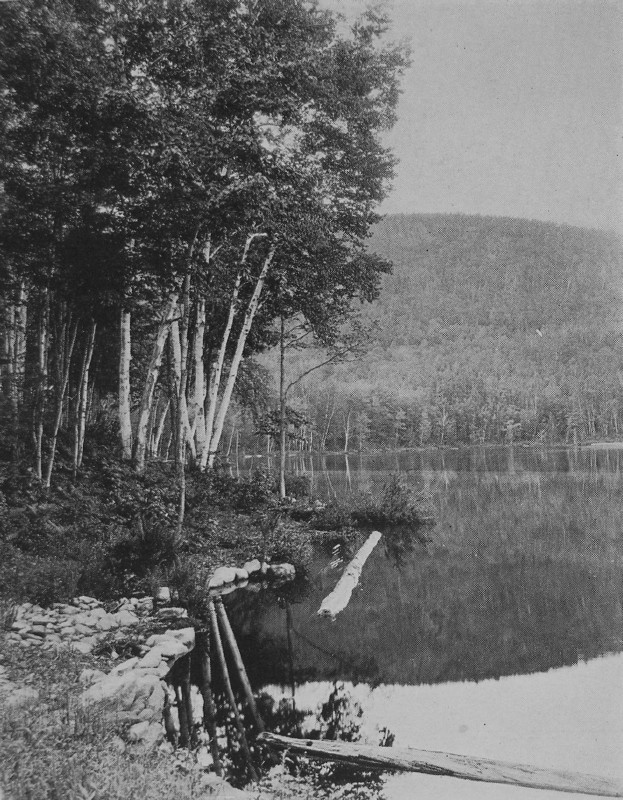 A LITTLE MAINE LAKE - RANGELEY 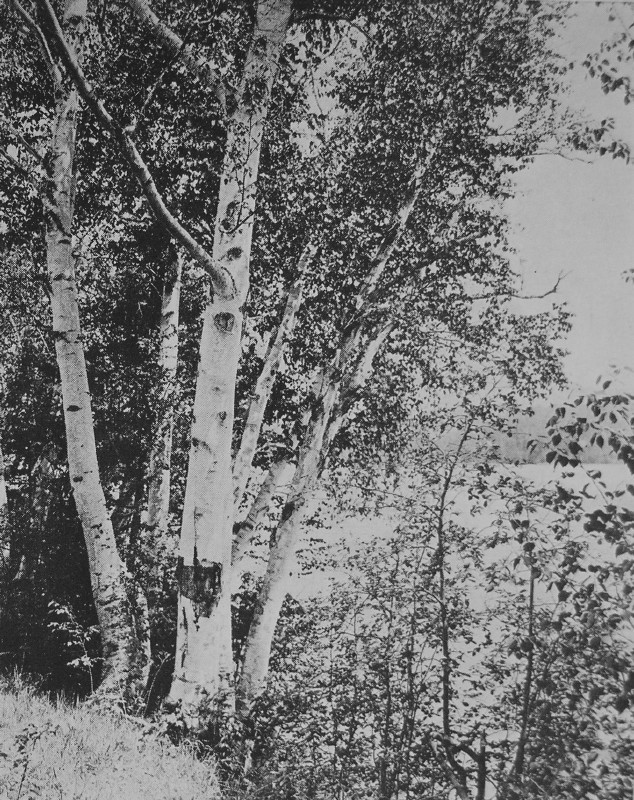 A RANGELEY SCREEN 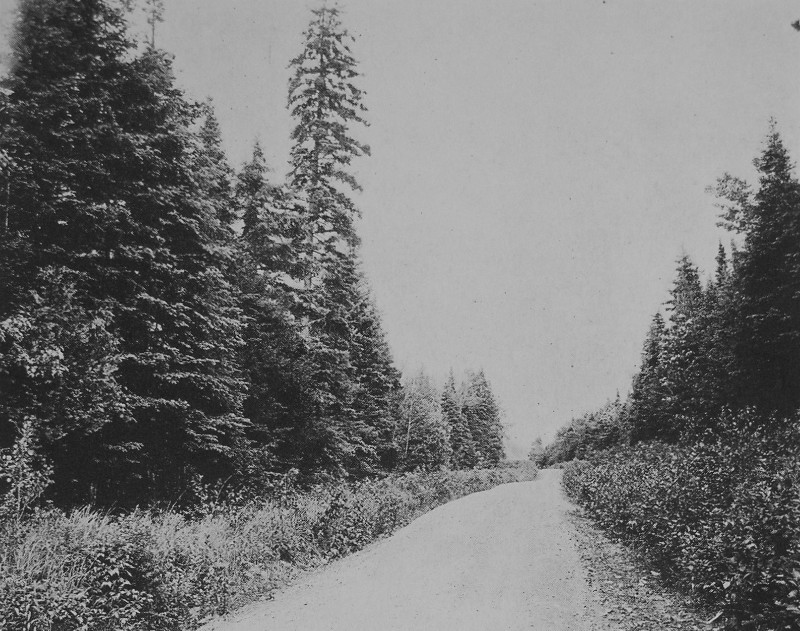 A BANGOR-AROOSTOOK ROAD 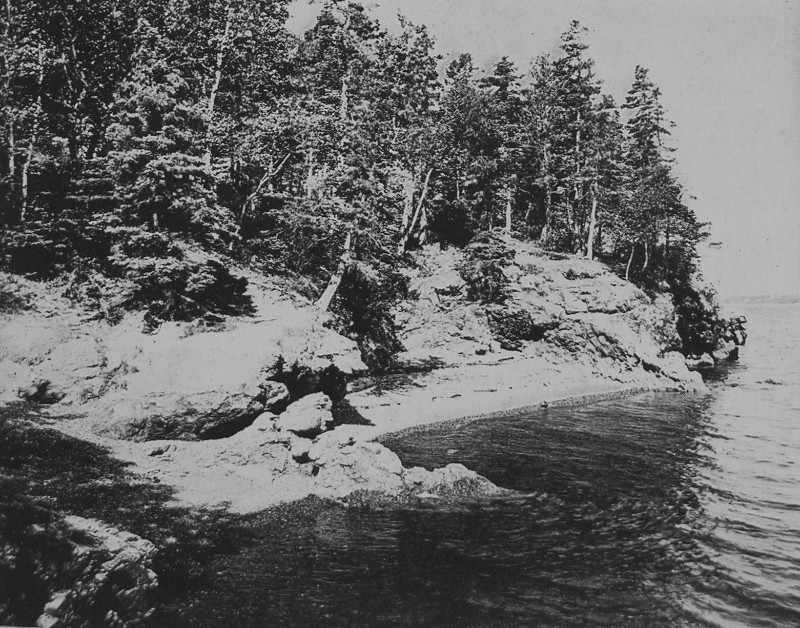 A MOUNT DESERT COVE 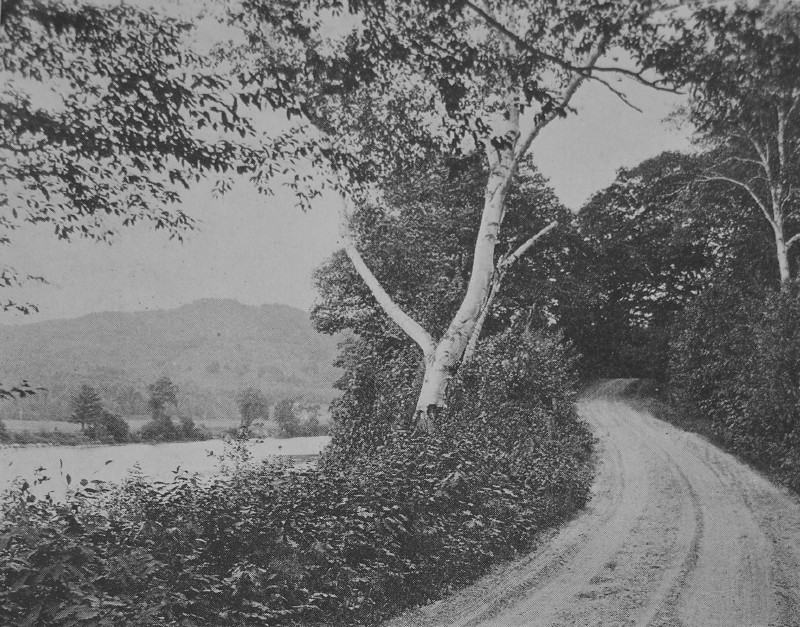 AN ANDROSCOGGIN ROAD - RUMFORD 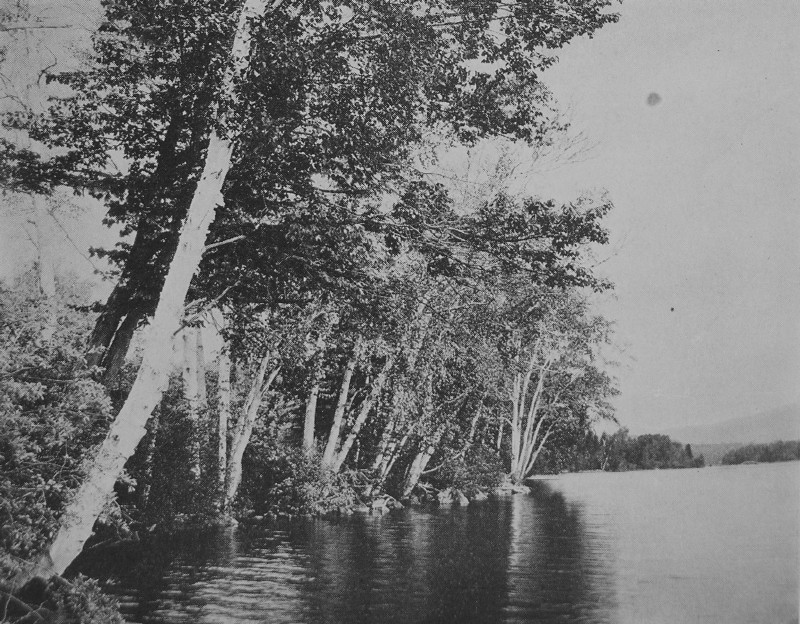 ALONG RANGELEY BANKS 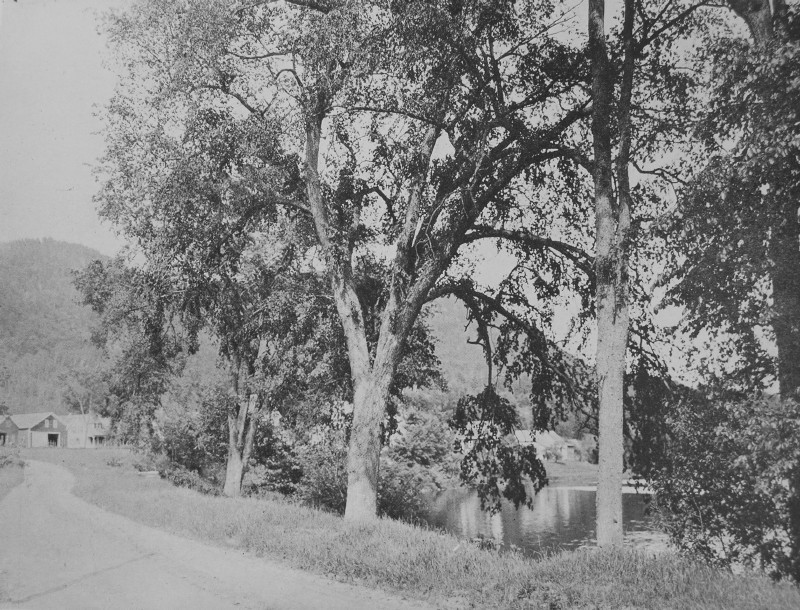 ANDROSCOGGIN ELMS - RUMFORD CENTRE 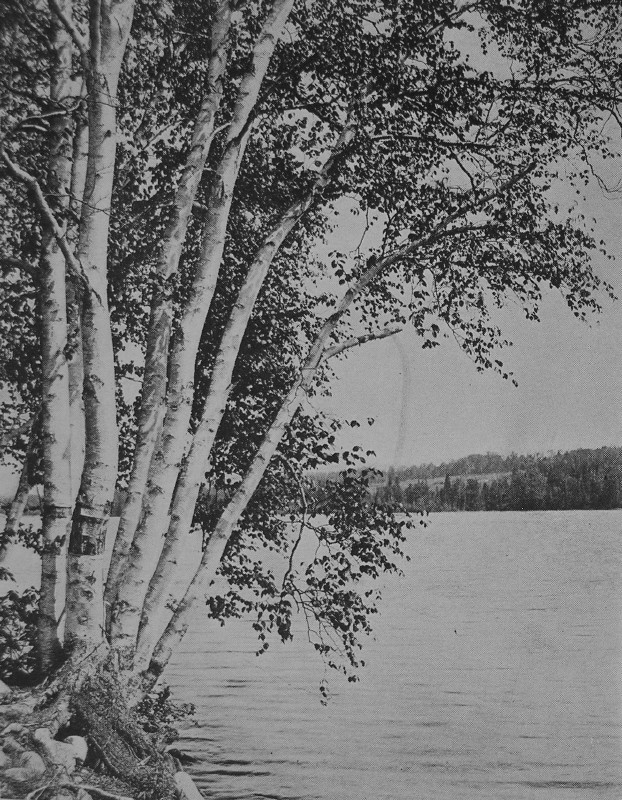 A RANGELEY BRINK 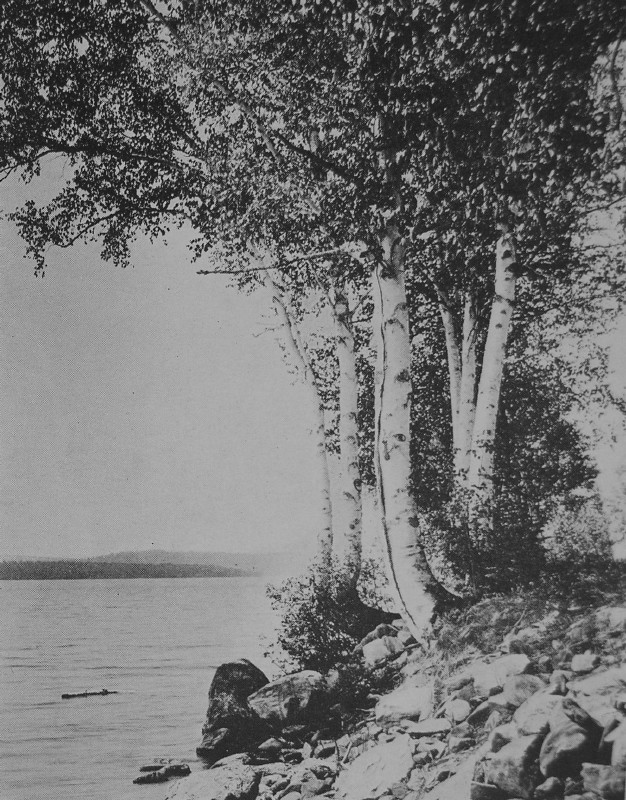 A MAINE LAKE BANK - RANGELEY
WHAT EXPLORERS
THOUGHT OF MAINE ADAM OF BREMEN wrote of the Northmen in New England: "Sueno, King of Denmark, to whom I paid a visit, described to me, in conversation on the northern countries, among many other islands, one which had been called Vineland, because the vine would grow there without any cultivation, and because it produced the best sort of wine. Plenty of fruits grow in this country without planting. This is not mere rumor. I have this news from very authentic and trustworthy relations of the Danes. Beyond this land, however, no habitable country is found. On the contrary, everything to the north is covered with ice and eternal night." A RANDOLPH STREET This was an
impression obtained in America about the year 1000. André
Thevet, in 1556,
wrote thus of the coast of Maine, referring to the Penobscot river:
"Here
we entered a river which is one of the finest in the whole world. We
call it
Norumbega. It is marked on some charts as the Grand River. The natives
call it
Agoncy. Several beautiful rivers flow into it. Upon its banks the
French
formerly erected a small fort, about ten leagues from its mouth. It was
called
the Fort of Norumbega, and was surrounded by fresh water. "Before you
enter this river, there appears an island surrounded by eight small
islets.
These are near the country of the Green Mountains. About three leagues
intO the
river, there is an island four leagues in circumference, which the
natives call
Aiayascon.* It would be easy to plant on this island, and to build a
fortress,
which would hold in check the whole surrounding country. Upon landing,
we saw a
great multitude of people coming down upon us in such numbers that you
might
have supposed them to be a flight of starlings. The men came first,
then the
women, then the boys, then the girls. They were all clothed in the
skins of
wild animals." Abbott, in his history of Maine, speaking of the voyage of Martin Pring, in 1603, says: "On the 7th of June, Pring entered Penobscot Bay. He gives a glowing account of the almost unrivalled scenery there presented. They found excellent anchorage, and fishing-ground never surpassed. The majestic forests deeply impressed them. Upon one of the islands they saw a number of silver-gray foxes. This led them to give the name of Fox Islands to the group. Sailing along the coast in a south-easterly direction, they passed by the beautiful islands which stud Casco Bay, and entered a river which was probably the Saco. This they ascended about six miles. It seems probable that they also entered the Kennebunk and York Rivers. Finding no natives to trade with, they sailed farther south, where they obtained quite a valuable cargo." 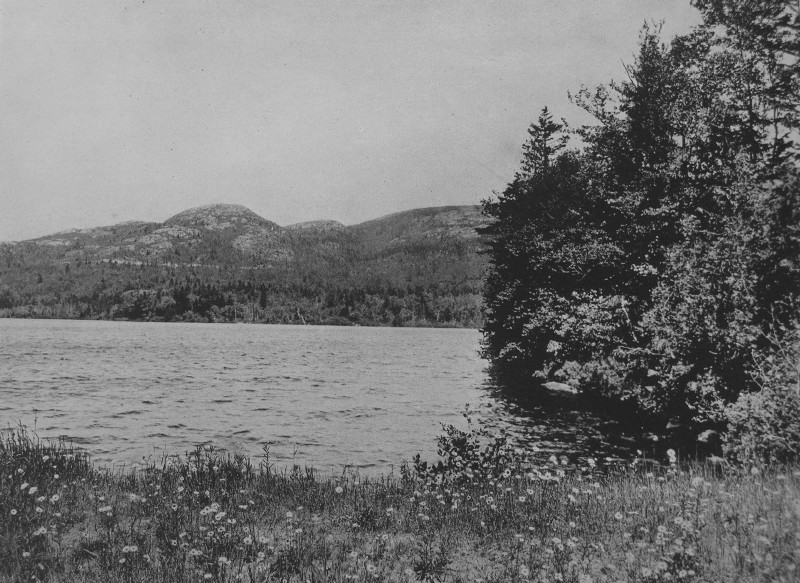 MOUNT GREEN IN DAISY TIME - MOUNT DESERT 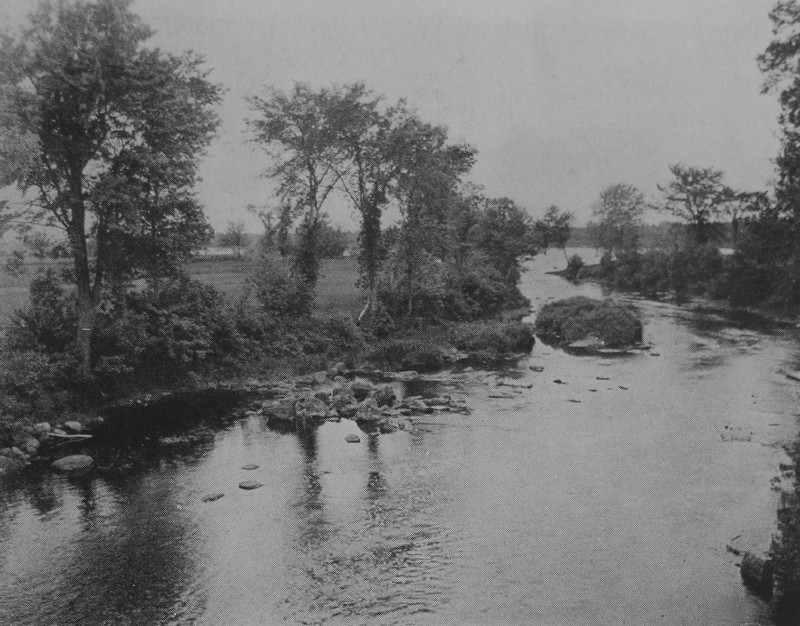 SUNKHAZE STREAM - MILFORD 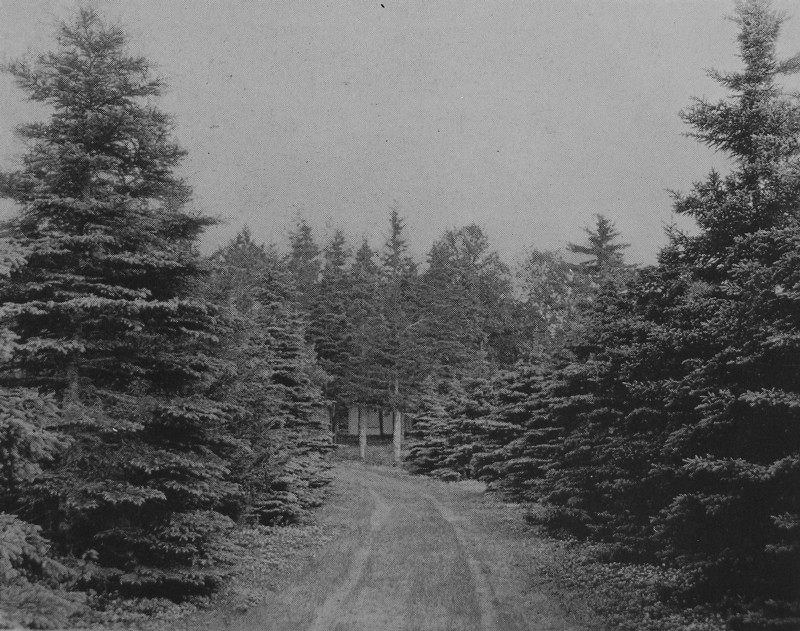 AN EVERGREEN DRIVE - GREENVILLE 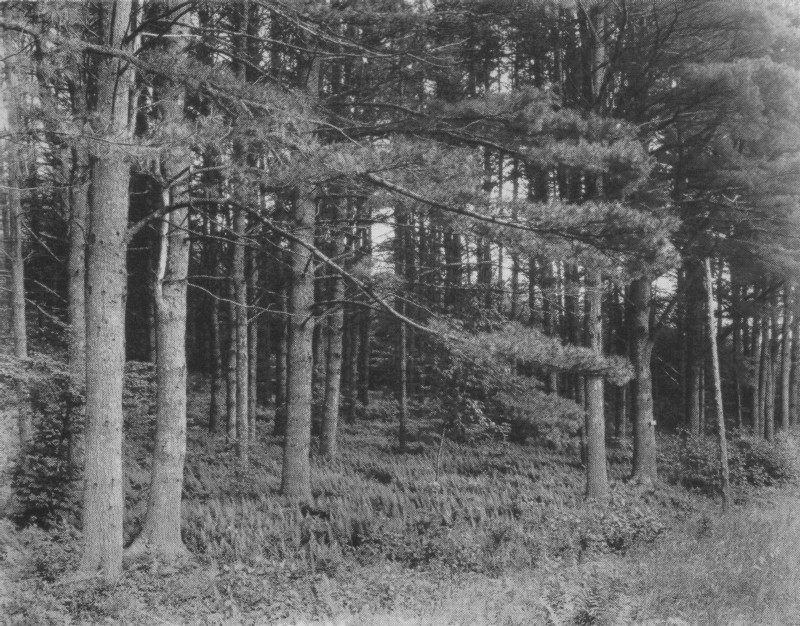 A MAINE PINE FOREST - WINTHROP 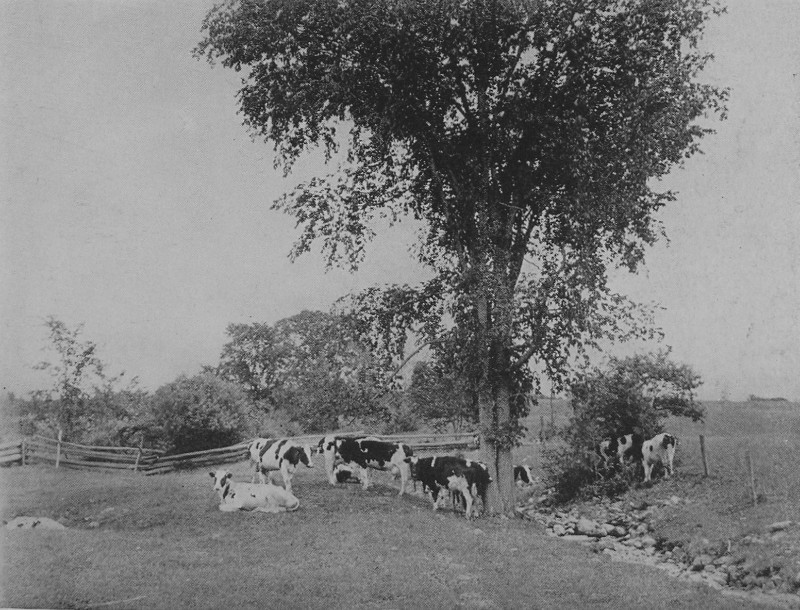 AN AROOSTOOK HERD 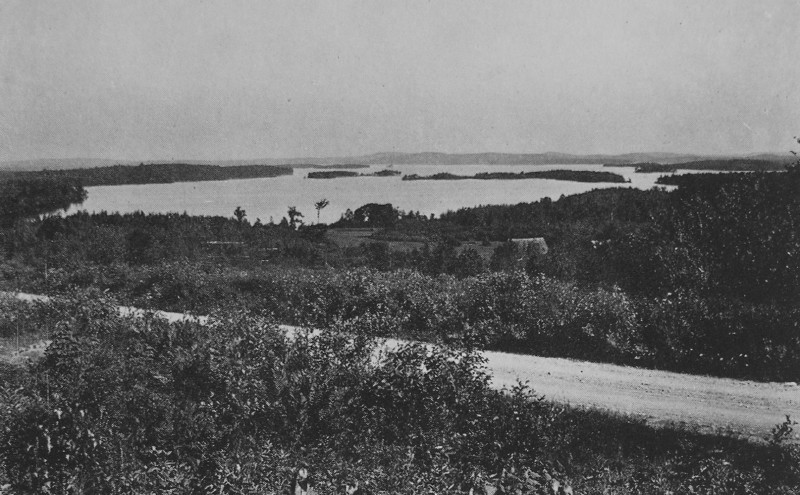 MEDDYBEMPS - WASHINGTON COUNTY 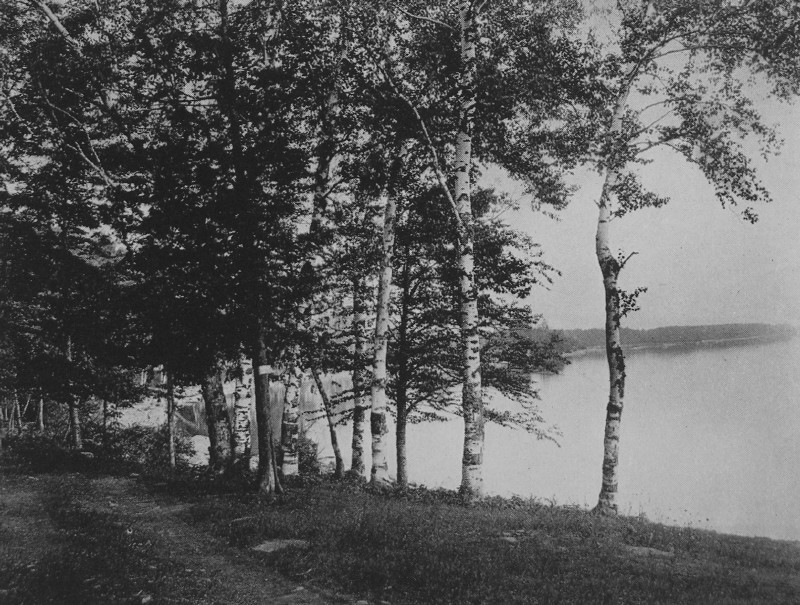 LAKE SEBASTICOOK - NEWPORT The frequency
of
lakes in Maine is thirty times as great as in the central and western
part of
the United States. These lakes are situated largely in the mountain
sections of
the state, so that their waters may be used over and over again in the
stream
by which they reach the sea. The working
energy
of the water powers if fully utilized would equal that of thirty-four
millions
of men. Europe is
indebted
to our clover, which was unknown before the discovery, as sowed grass.
In the
latter part of the nineteenth century it had become the leading grass
in
France. Captain George
Weymouth in 1605, coasting along Maine, came to what is now believed to
be
Monhegan. It appeared to him very beautiful. He judged it to be about
six miles
in circumference. The anchorage was good, and cod and haddock were
caught in
abundance. Waterfowl in large flocks were hovering over the cliffs.
"They
obtained an abundance of delicious salmon, and other fishes in great
variety.
They also feasted upon lobsters and other shell-fish. Wild currants
were found,
and luxuriant vines which promised an abundance of grapes. They found
the soil
to be very rich. Digging a garden, they planted pease, barley, and
other seeds,
which in sixteen days grew up eight inches. This was the first attempt
made by
Europeans to cultivate the soil of Maine." [It was hot, but —
eight inches!
AUTHOR.] "The charms of Penobscot Bay and River, as witnessed in the illumination of bright June mornings, seem to have delighted these voyagers as they had others who preceded them. The scenery is described as beautiful in extreme, with luxuriant forests and verdant meadows. The river was wide, deep, and of crystal purity. A great variety of birds of varied plumage flitted through the groves, and their songs filled the air. There were many sheltered coves, with grassy banks, luring the voyagers to the shore. In glowing phrase the journalist of the expedition writes: Many who had been travellers in sundry countries, and in most famous rivers, affirmed them not comparable to this. It is the most beautiful, rich, large secure-harboring river that the world affordeth." "But it was a
picturesque scene, as, in the sunlight of that calm June sabbath, the
voyagers
gazed upon the panorama which encircled them. The ship was at anchor
upon the
mirrored waters of a solitary cove, far away in the New World. Bays,
inlets,
and islands were opening in all directions behind them. Birch canoes
filled
with Indian men, women, and children, driven by the paddle, were
gliding from shore
to shore. Not far from the ship, on the land, were the few frail
wigwams which
the Indians had reared. The fire at which the women were cooking, the
ascending
smoke, the groups gathered around, all combined to present a picture as
novel
as it was attractive." In the
Gazetteer of
Maine by George J. Varney, 1881, it is stated that on the official map
may be
counted 5151 streams. It is an easy number to remember. If we consider
that
there are at least twenty beauty spots on every stream, we arrive at
pictorial
riches unspeakable. Seven of these streams connect interior water-sheds
with
the sea. Beside that, there are nineteen streams flowing into the sea,
but
without any connecting streams behind them. What Mr. Varney refers to
as an
official map is, of course, the state map which was so considered. It
must be
remembered, however, that this map is largely made up without surveys
in
detail. There may be, that is to say, on the final maps of the Geodetic
Survey,
a greater number of streams than Mr. Varney mentions. The valleys of
Maine do not ordinarily reach the dimensions or the steepness of
gorges. A very
notable exception is the gorge of the western branch of the Penobscot. In the higher lands of the state a very slight elevation is sufficient to change the destination of the waters. In time of freshet the Penobscot actually mingles its head waters with the Allagash, the Aroostook, and the St. Croix. The Kennebec, with the present system of dams, may be added to this community of waters. The fellers of logs are able to direct the drift of the timber, in many cases, so that it will go down the Kennebec, the St. John, or the Penobscot. A SHEEPSCOT COTTAGE Regarding the
elevations in Maine, they may be considered as a continuation of the
Appalachian chain, extending from Georgia to Katahdin. The form of the
Maine
mountains is often conical or otherwise of an interesting shape. Megunticook in
Camden is about 1457 feet in elevation, Green Mountain about 1533 feet,
both of
these are shown (pp. 145 and 256). The elevation
of
Moosehead Lake is about 1100 feet above the sea. It is the highest
large body
of water in the east. As to the count
of
lakes and ponds, that has been confused somewhat with their combined
area. It
has been stated that their number was 2222, and that their combined
area was
2200 square miles. The coincidence will bear examination. Nevertheless,
Mr.
Varney states that on the maps of Maine there are represented 1568
lakes and
ponds. We can testify to having found lakes which are not on those
state maps,
though we believe everything of the sort is shown 0n the Survey map. We
should
count it therefore, an undoubted fact that the reputed number of lakes
is not
too great. We are informed
that the state laws forbid the entire shutting off of any lake
exceeding seven
acres in area. That is to say, a right of way must be accorded to the
lake if
it is more than seven acres in extent. This provision, of Course,
arises out of
the insistence in ancient common law on the rights of the common man.
It is
thus impossible for any one to secure absolute property control in any
extensive body of water, although he may own all the land bordering
that body. Absolute
ownership
in little lakes has, however, been availed of in many instances by
those who
have stocked these lakes with fish. In one instance an owner used his
rights in
a commercial way, making a charge by the hour for fishing. His water
was so
well-stocked that the fisher was not without value received. Private
ponds thus
make available to their owner a supply of fish, and the raising of
fishes is a
minor industry. The hatcheries of the state will supply to a proper
person
stock for replenishing streams, and this without charge. It appeals to
the
imagination of many to own a private pond. Such persons may easily
gratify
their desires in Maine. * Islesborough THE ROMANCE OF
THE
KENNEBEC WHATEVER is the
basis of the perpetual allurement connected with
"old forgotten far off things," we find it in our
nature, sometimes so compelling that the past seems more important than
the
present. Of course it is easy to overdo our love of the old. Life,
however, has
a breadth and richness dependent largely on its sense of continuity
with the past.
He who enjoys only the present cannot find as great pleasure as he who
thinks
of the present as a part of a great whole. Whether or not
it
is rational, it is nevertheless true that the people of Maine derive a
certain
pleasure from the fact that there were settlements on their coasts
before the
time of the Pilgrims. The island of Monhegan was long a headquarters
for
fishing before any permanent settlement was attempted. Residents of
Cushnoc,
now Augusta, are conscious of a better historic sense since they know
that
Captain Gilbert reached the site of their city in 1607. The river was
long an
avenue of communication between the sea and the St. Lawrence. The
carries are
short. The Pilgrim
Colony,
as early as 1625, exchanged corn on the Kennebec for beaver skins.
Edward
Winslow, a man of education, fine feeling, and pleasing manners, was at
the
head of this little expedition. The Pilgrims were in debt up to their
ears,
and, as there was a settlement at Kittery, and as the French claimed
the region
from the Penobscot eastward, the Kennebec offered the only important
water
route into the interior. The Pilgrims, therefore, at much trouble and
expense,
procured a patent for the Kennebec region. Mr. Allerton brought back
from
England, with the patent, goods for trading. Fort Western, therefore,
is not
the earliest erection at Augusta. The Pilgrims had a trading-house; and
Mr.
George Francis Dow points out that in 1692 the remains of the old
trading-post
were then visible, sixty-four years after it was built. On the first
visit
to Cushnoc, Governor Bradford states that the leader, Mr. Winslow, was
accompanied by "some of ye old standards," by which phrase he refers
to members of the Mayflower Company. It is a matter
of
special interest to the writer that Governor Thomas Prince of Plymouth
was one
of seven men to buy the fishing rights of the colony and assume its
onerous
debts. Governor Prince was a masterful man who may be counted with his
associates the first banker of Maine. The idea was conceived to spread
the use
of wampum. Prince and his associates secured its manufacture in large
quantities and the use of it was very much extended. It became the
trading
currency through which Prince and his friends were able to pay off
their
obligations and secure a competency besides. The writer now has the
court
cupboard which Governor Prince placed in his parlor, the dining-room of
that
day, at the governor's seat, "Plain Dealing," a mile north of the
center of Plymouth. This cupboard the governor willed to his widow in
1673. As
it was a Plymouth manufacture it was probably made by John Alden, or at
least
under his superintendence. It was also undoubtedly paid for by trade
with the
Kennebec Indians, with wampum. The writer feels, therefore, that he now
has a
very tangible, in fact almost monumental reminder of old Cushnoc. The Pilgrims
really
had a corner in wampum, in their competition with the other fishermen
and
traders. A son-in-law of
Governor Bradford, Lieutenant Southworth by name, was living at Cushnoc
in
1654. It was from
Cushnoc
that other trading posts were established which were really more in the
nature
of outposts. Thus Fort Halifax was built opposite what is now
Waterville in
1754. In 1752 Fort Richmond had long existed, and a trading-house was
built
there. The presence of
the
Jesuit missionary, Sebastian Resle, at Norridgewock, of course held the
Indians
at that point in the French interest, and barred the advance of the
English
beyond Fort Halifax. Rasle was a gentleman of fine attainments. He was
also very
faithful to his vows, and was thought of by the French as a saint, of
whom the
English made a martyr, with his followers, when they raided his
village. There were long
periods when the frontier wars drove back the settlers, and the trading
was
neglected. The old patent was revived in 1749, a new company was
organized in
Boston, and Fort Shirley was built opposite Fort Richmond. A large
house still
stands in Dresden dating from 1761. It was erected as a court-house and
tavern
within the parade ground of the fort. Fort western was built on the advice of Governor Shirley of Massachusetts to overawe the French and Indians. Mr. Dow has very fully and with the fascination that marks his style, set these matters forth in a pamphlet on Fort Western. The edifice is of the highest interest, not only because of its historic associations, but also from its construction of hewn logs. It proved an important station for Benedict Arnold and his expedition in their abortive attempt on Canada. We suggest that this fascinating story be followed up more at length. Aaron Burr, Paul Revere, Captain James Howard, and other notable names are connected with this fort. SERGEANT LARRABEE'S GARRISON, KENNEBUNK, 1724 Mr. Guy T.
Gannett,
who was a descendent of the Howard who commanded the fort, has rescued
and
restored this most important Maine relic, and has presented it to the
city of
Augusta as a memorial to his mother, Mrs. Sadie Hill Gannett. As this work is a book of pictures, it cannot enter at length into the romance of the Kennebec, but very early settlements at Popham and other points near the mouth of the river make this stream historically one of the most important regions in Maine. It shares with Pemaquid, Castine, and Kittery the highest antiquity in our national history. A WONDERFUL OLD
EDIFICE THE old York
jail is
unique in Maine from the various interests which it stands for. Maine
was
settled by Church of England people. That is, they sent out the
settlers, but
the latter were by no means selected for their religious conviction. We
find a
good deal of complaint regarding the character of the pioneers and
fishermen on
the Maine coast. No doubt they were the same roving, reckless sort
common in a
later time on our western frontiers. York was an aristocratic
settlement
presided over, as was the rest of Maine up to the Penobscot, by the
agents of
Sir Fernando Gorges. The jail was probably needed. We trust that the
Maine
people of this day will not think these remarks a reflection upon their
ancestors, the solid citizens who came later and settled on the soil.
The jail
was at once the residence of the jailer and the abode of the evil
spirits of
that time, or such of them as had been caught. One may still visit the
ancient
cells and see the slit in the wall through which food was passed.
Above, two of
the rooms are divided by the swinging panel partition, which indicates
that
sometimes the rooms were thrown together to provide scope for the
dancers. How
must the prisoners have felt as they heard light, free feet disporting
themselves overhead. The jail has become the nucleus of old
curiosities, the
outstanding object among them being the wonderful canopied bed, shown
in a full
page of the author's "Furniture of the Pilgrim Century." One feels the same sense of antiquity at York as in the oldest Massachusetts communities. DWELLINGS AT
KITTERY BESIDE the house of Sir William Pepperell, the American general who so distinguished himself, we show the hallway of the Sparhawk house. A carved sparrow hawk, from which the name of the owner was derived, is seen suspended as if in flight. 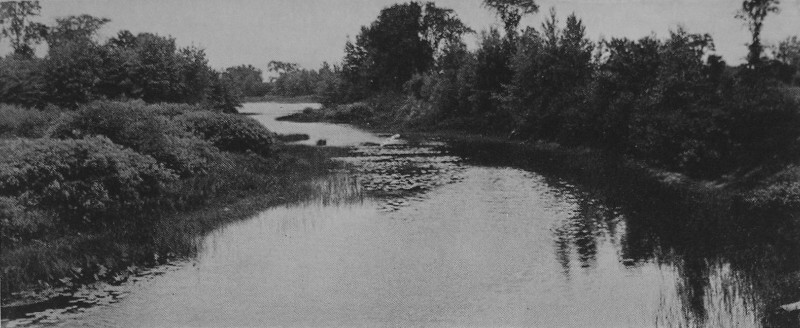 THE PASSADUMKEAG 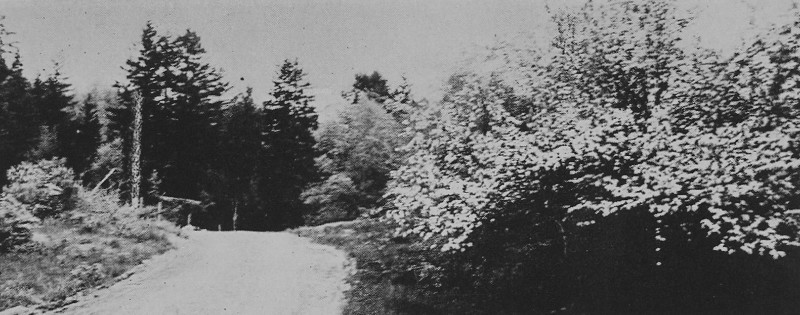 A KENNEBEC ROAD 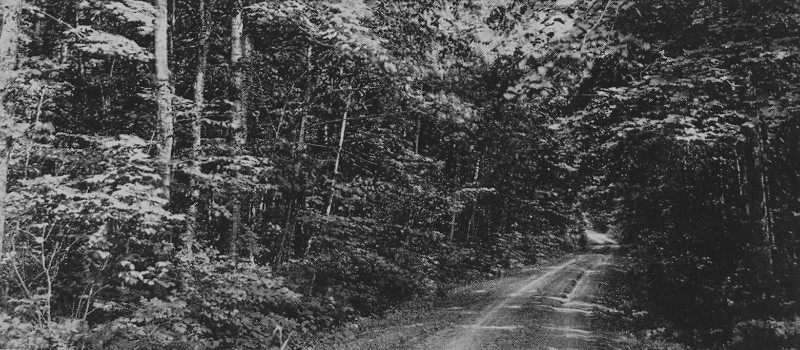 A MANCHESTER WOODLAND  A MOUNT DESERT COVE 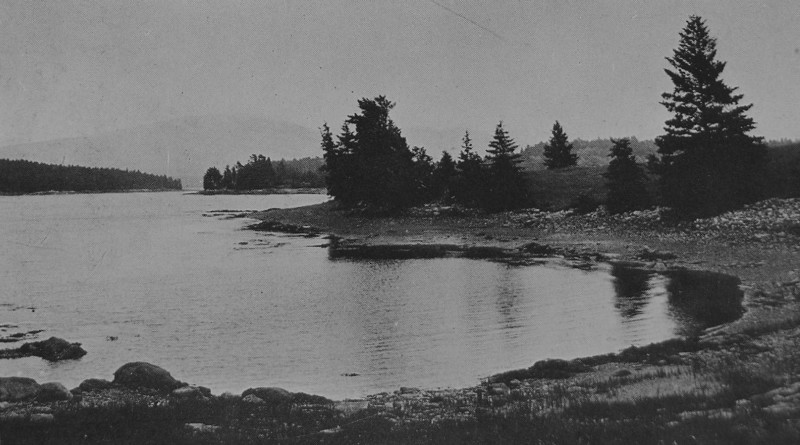 AN OXBOW SHORE - SOMESVILLE, MT DESERT 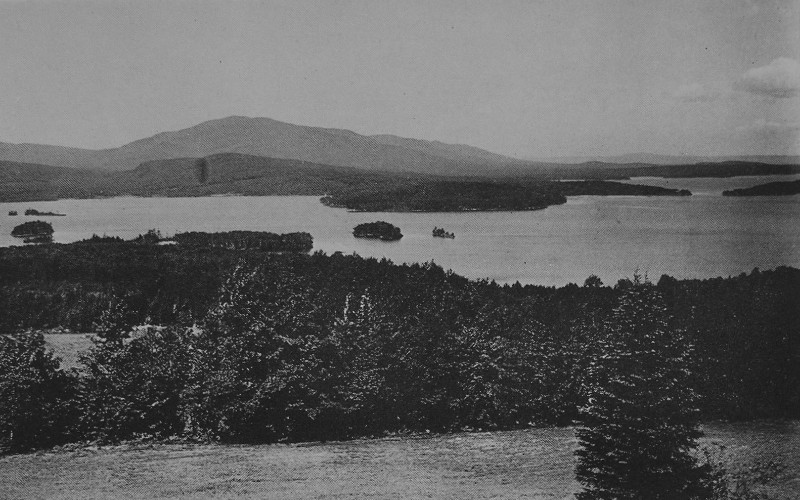 MOOSEHEAD LAKE, GREENVILLE 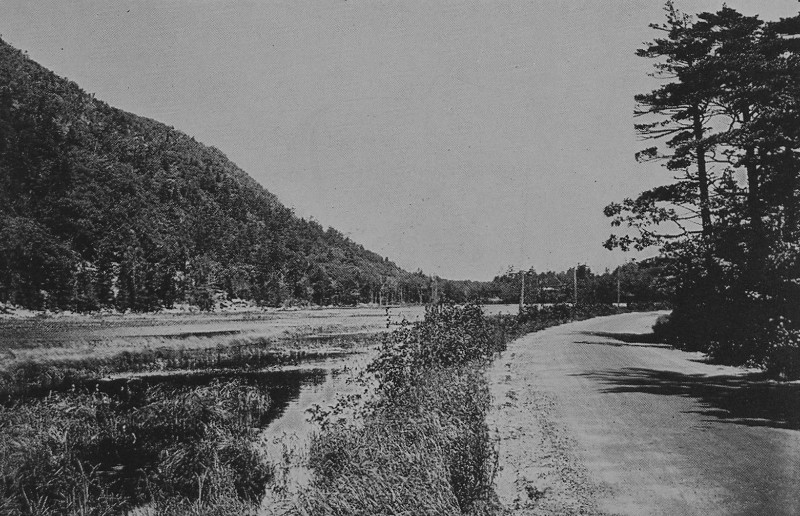 A MOUNT DESERT DRIVE 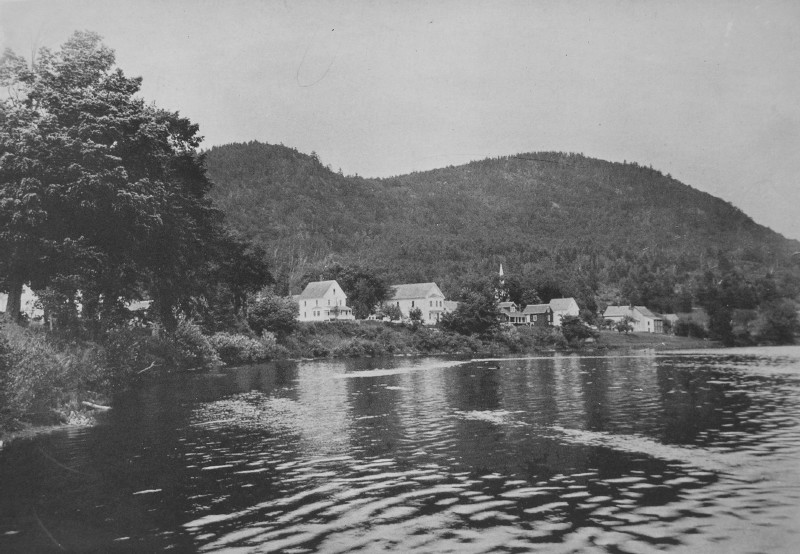 AN ANDROSCOGGIN VILLAGE - RUMFORD CENTRE There is in the adjoining room a remarkable fire-place, on either side of which, on a bevel, is a shell-top cupboard. The existence of two such cupboards in the same room is the very greatest rarity. At Eliot, which was once a part of Kittery, there remain at least two other seventeenth century houses with very sharp gables. One of them has been ruined in the restoration, but the other is substantially as built, or could be made so. The Sarah Orne Jewett place, in one of the Berwicks, seems to have been done by the same builder who erected the Wentworth Gardner house in Portsmouth. The sign-board at the street corner, the tall slender trees and the sharp roof line together form a very charming effect. |